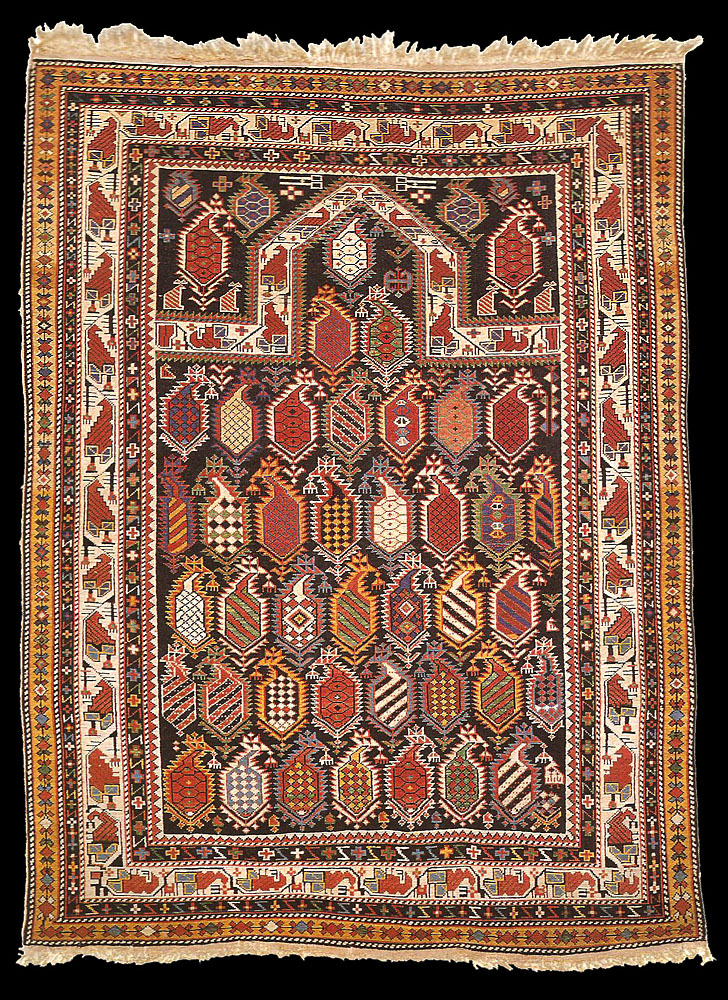|
Antique Shirvan
Marasali prayer rug,
Azerbaijan, 3rd quarter 19th century. 112 x 152 cm, published Ralph
Kaffel's Caucasian Prayer rug, plate 92
|
|
Early black Marasalis with curved prayer arches, although very special, are
by no means the only Marasalis of merit. Some later examples - such as the
rug shown here - have been wonderfully crafted- with large, bold,
alternately facing boteh in a panoply of designs. In this example, the boteh
are so large that only five horizontal rows are needed to fill the field.
(In most later examples, which are more crowded and with less variation in
boteh designs, the boteh face the same direction)
Marasali designs tend to be fairly standardized, usually featuring more or
less geometric botehs on a blue field. Within this formula, however, some
surprising variations can be found. In this example 11 colours are used and
the 46 boteh display six different designs, including crosshatch, honeycomb,
diagonal stripes, a central axis, diamonds and double diamonds. A total of
37 design variants can be seen. The typical Marasali "bird" border is
flanked by characteristic blue-ground guard borders, then framed by a
supplementary guard border of angular floral design, on a yellow ground.
Lit: Ralph Kaffel's Caucasian Prayer rug, plate 92
 |

